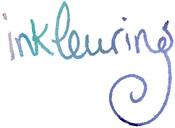
#2 Kuti Wildlife Reserve
Kuti Wildlife Reserve (Malawi) | September 2015
Kuti Wildlife Reserve is a haven of 2000 hectares for wildlife in an area that is under increasing population pressure. Because of the absence of large predators, it is an ideal reserve to explore on foot. We walked from the campsite surrounded by grassland Savannah and some bush. We saw an ostrich, bush buck, sable antilopes and zebras. There were also two camels, a male and female. First we ran into them when they were walking together on the same path as we. Later we ran into the female when she was calling her mate. We really enjoyed being in the park without the car, we felt much closer to the animals and also more vulnerable.
It is remarkable to see that often each village has their own type and color of predominant trash. On our way to Kuti we saw a lot of little blue plastic bags along side the road, used when people buy one or two eggs, some herbs or a bun. These we also found inside the reserve, where local communities live. Then I found a feather with blue and grey. In the frequent bush fires antilope excrements and termite hills also burn, giving them a grey colour, so I added them to my collection.
Read more about this art project

#3 Kuti Wildlife Reserve
Kuti Wildlife Reserve (Malawi) | September 2015
Kuti Wildlife Reserve is a haven of 2000 hectares for wildlife in an area that is under increasing population pressure. Because of the absence of large predators, it is an ideal reserve to explore on foot. We walked from the campsite surrounded by grassland Savannah and some bush. We saw an ostrich, bush buck, sable antilopes and zebras. There were also two camels, a male and female. First we ran into them when they were walking together on the same path as we. Later we ran into the female when she was calling her mate. We really enjoyed being in the park without the car, we felt much closer to the animals and also more vulnerable.
It is remarkable to see that often each village has their own type and color of predominant trash. On our way to Kuti we saw a lot of little blue plastic bags along side the road, used when people buy one or two eggs, some herbs or a bun. These we also found inside the reserve, where local communities live. Then I found a feather with blue and grey. In the frequent bush fires antilope excrements also burn, giving them a grey colour, so I added them to my collection.

